By Krista Chouang
Staff Writer | The Pacific Times
The COVID-19 pandemic has forced many establishments to operate outdoors to be safe for their participants, including places of worship.
Divine Mercy Catholic Church, a church located at 2231 Club Center Drive in Natomas, has undergone a transformation to allow its participants to attend mass but still be mindful of the pandemic.
“Of course, before, you got to sit wherever you wanted, and it was crowded,” said AJ Muñoz, a 17-year-old active youth member of the church and a junior at Inderkum. “Sometimes the church would be so full that people would be in the narthex, which is like the lobby of the church.”
The church has put several preventative measures in place meant to protect those in attendance from COVID-19. According to Sister Luz Manrique, the director of religious education at Divine Mercy, the church receives instructions on what measures to take from Gov. Newsom’s directives and apply it to mass.
Currently, mass is held outside of Divine Mercy underneath a large tent with a section of the parking lot reserved for additional seating outside the tent. Attendees are also able to watch the mass from the safety of their cars with the radio turned on to the station 90.1 FM.

Strips of tape mark places for parishioners to put their chairs so they can observe social distancing. / Facebook Photo
“One thing I noticed, is the difference in attendance,” said Sister Luz. “When we had our masses before the pandemic, the church was full, overflowing in fact.”
There are lines of tape marking the required six foot distance between attendees, who can bring their own lawn chairs, but there are foldable chairs available for those who do not have their own. “When we had the pandemic, so many of the families started going to mass online,” said Sister Luz. “But I think with the leadership of Father Eric, more and more people are coming to church.”
When attendees enter the sitting area, they must fill out a form with questions about symptoms related to COVID-19 so the church can keep track of the people who were at church if anyone happens to become sick with COVID-19. Hand sanitizer is also provided and attendees are required to wear a mask during mass.
Before the COVID-19 pandemic, mass was held indoors with an estimated triple the amount of attendees.
“When we had our mass outdoors, in the beginning we had only 30, maybe 50, but later on it became one hundred or more,” said Sister Luz. “Of course they were not all together under the tent. There were some outside the tent and others in their cars.”
Sacraments observed by Catholics have been adjusted to enhance the safety of attendees, including baptism, Eucharist, reconciliation, and confirmation. Baptism is the initiation of a child into the church involving the child being anointed with holy water in the presence of their parents and godparents.
According to Sister Luz, the pandemic has caused far less baptisms to take place, although families are still preparing for the ceremony. Prior to the pandemic, attendees would line up during mass to accept Holy Communion, or holy bread from the priest for the sacrament of the Eucharist.
According to Sister Luz, some attendees would accept the communion to their hands while others preferred accepting it directly to their mouth. There were some occasions where attendees could drink holy wine from the same cup, but since the pandemic began, attendees would remain next to their seats or in their cars as the priest goes to each participant and gives them the holy communion by hand only.
Like baptism, some traditions have continued such as an important ceremony called First Communion where a child around eight years old would receive Holy Communion for the first time after a year of preparation. Due to the pandemic, the ceremony was postponed and restricted attendance, but the children were still able to be baptized.
Another practice in the church that has been adjusted is reconciliation, otherwise known as confession. Before the pandemic, those who seeking to confess their sins could visit the confession booth every day after mass except on Sundays. There often would be a long line as attendees waited for their turn. During the pandemic, those wishing to confess are required to sign up for a specific time to eliminate too many people in the same place at the same time.
The sacrament of confirmation is the last sacrament of initiation during which recipients, typically between the ages of 14 and 17, become officially responsible for their own faith in the church and fully receive the Holy Spirit after two years of preparation. Due to the pandemic, the ceremony was postponed but did end up taking place in August.
“I was slightly disappointed at the fact that I couldn’t invite more of my family to my confirmation, that we weren’t able to have a full church service, and that the bishop wasn’t there to anoint us with the oil like he usually would,” said Stephanie Labang, a freshman at NP3. “Still, I appreciate my church’s efforts to adjust and ensure that we’d still be able to receive our confirmation.”
Catholic Faith Formation classes, commonly known as CFF classes, are still taking place in the form of distance learning through Zoom. Students have live classes and non-live homework and continue their education to receive the sacraments of Eucharist and confirmation.
“We aren’t able to get much done,” said Kaylee Chouang, a 6th grader at NP3. “We usually just follow through Venture, which is a little booklet. The time in class shortened a lot and only are able to do the gospel reading and a short writing or activity. I definitely miss being able to communicate more and get things done.”
Ash Wednesday, a Catholic holiday marking the first day of Lent season, took place on Feb. 17, 2021. Before the pandemic, attendees would line up inside the church during mass to receive the ashes of cremated palm leaves in the shape of a cross on their foreheads. Due to the pandemic, only 15% of the attendees were allowed inside the church and the rest remained outside to avoid becoming a large crowd.
Attendees inside the building would line up to receive the ashes, but attendees outside the building would stay in place and wait for whomever administered the ashes to come to them. Instead of having ashes drawn in a cross on the forehead, attendees just received a light sprinkle of ash on top of their head to avoid cross contamination.
Similar to how religious education has been moved online, mass is also live streamed on the church’s YouTube channel, Divine Mercy Parish of Natomas. According to the attendees, there are both ups and downs.
“A down would be not being able to socialize and see people and being physically there, ‘cause it’s kinda different being there,” said Muñoz. “When you’re at home, you can be laying in bed or on the couch watching it. Sometimes it’s hard to pay attention, so you end up just dozing off, staring at the wall, or you fall asleep.”
Some positives are that attendees are able to watch the mass from the safety of their homes, and there is still a community online to stay connected to through the Facebook and YouTube comment sections. Thanks to the high video and audio quality of the mass, there are no problems coming from the broadcasting itself.
Christmas is one of the most important events at Divine Mercy since it is a celebration of the birth of Jesus. Under normal circumstances, the four weeks leading up to Christmas called Advent, mass attendance generally increases, with the church being its most full on Christmas Eve and Christmas Day. Also, there is usually a series of Filipino evening masses lasting for nine days leading up to Christmas called “Simbang Gabi” that are followed by massive potlucks every night. However, Christmas during the pandemic was spent outside as a normal mass without Simbang Gabi and far less attendance.
“It was nice, but the vibe was not the same,” said Muñoz in regards to Simbang Gabi. “The whole place is decorated all Christmas-y, and everyone’s dressed nicely or wearing red, and there would be a potluck like every single night, it was crazy. And it was just a nice way to connect to people. Even if you weren’t Filipino, people still went to just experience it. Not having that was so sad, they didn’t even do it virtually because it’s such an in-person thing to do, and we didn’t do it.”
There are several smaller events contributing to the Christmas celebrations, like choir concerts and a reenactment of the Nativity, also known as the birth of Jesus. However, due to the pandemic, these events were unable to take place for Christmas 2020. Reminiscing on the 2019 choir concert, Muñoz recalled preparations leading up to the event.
“We really planned that out for a couple months,” she said. “A lot of people came and it was really good and really fun, but we didn’t get to do that this year, which was really sad.”
The concert was successful and high in attendance, but choir members were disappointed they couldn’t repeat it due to the pandemic beyond a brief performance before the Christmas Eve mass.
“In 2019 we were like ‘I can’t wait to have more concerts next year!’ but it never happened,” said Muñoz. “…It was different. Definitely different.”
According to Sister Luz, one of the biggest struggles of the church right now is finances.
“Because there are less people coming to church, there is less contribution, so the church is really very much affected,” said Sister Luz.
Despite the pandemic, there is a positive side.
“Because of the pandemic, people are hungering more for God, and maybe they have realized what really matters, so these people are coming to church, even if they are in a way restricted,” said Sister Luz. “To me, that’s amazing. I like to look at the people and imagine it’s in the time of Jesus when Jesus was speaking and giving his teachings and all the people are gathering around him.”
Starting Saturday, March 6, there will be a mass at 5 p.m. held inside the church just for the elderly.

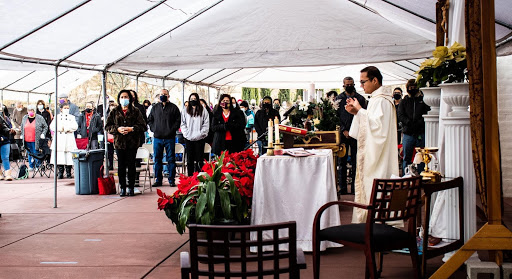
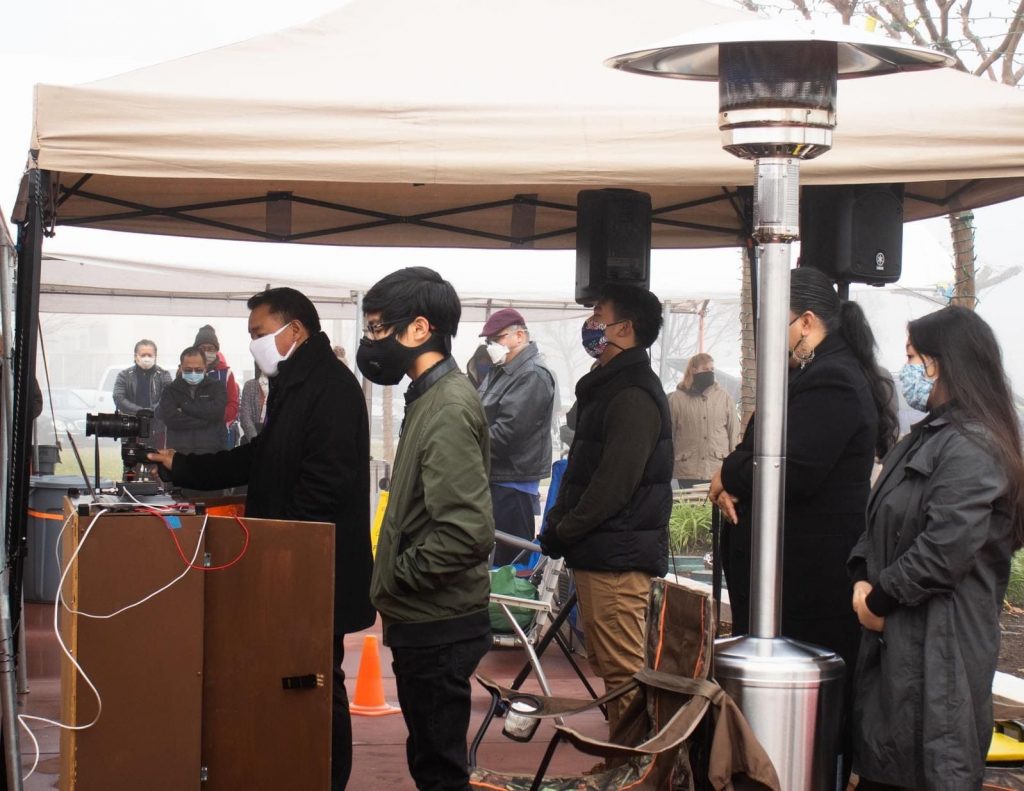
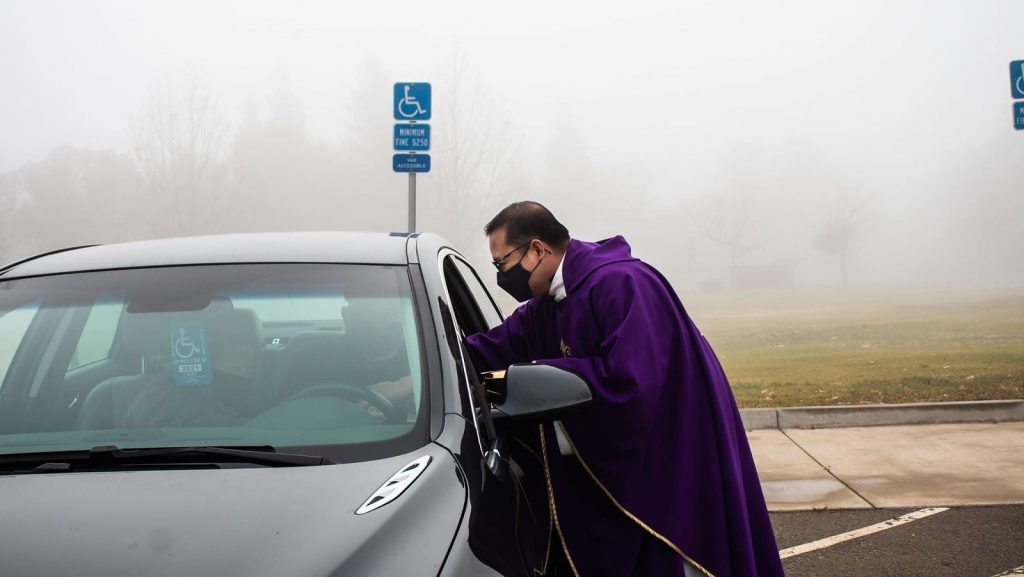


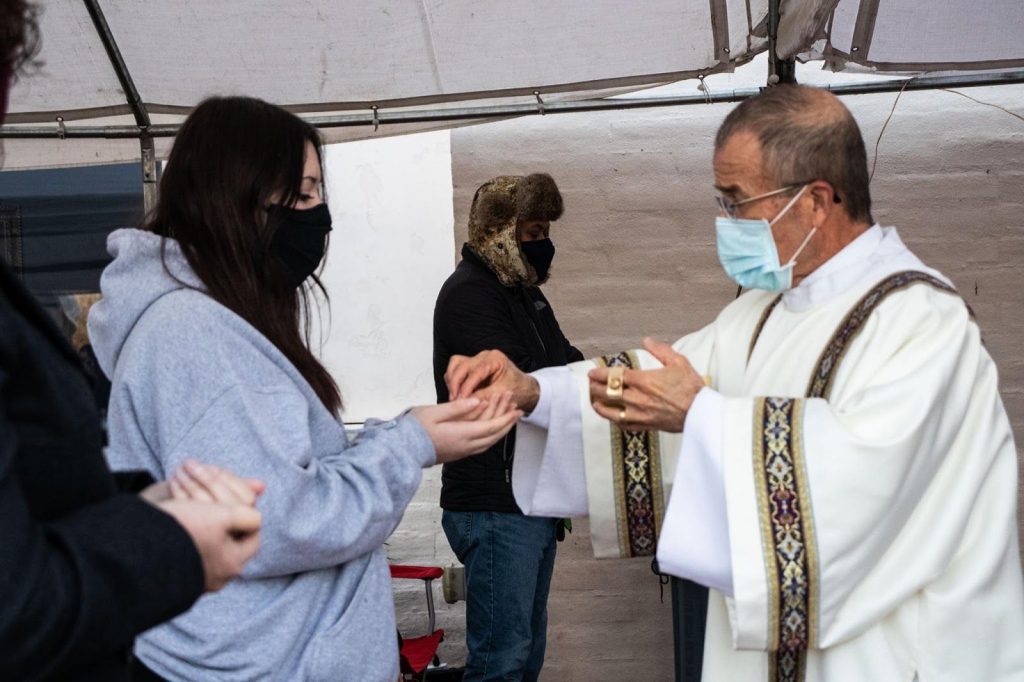
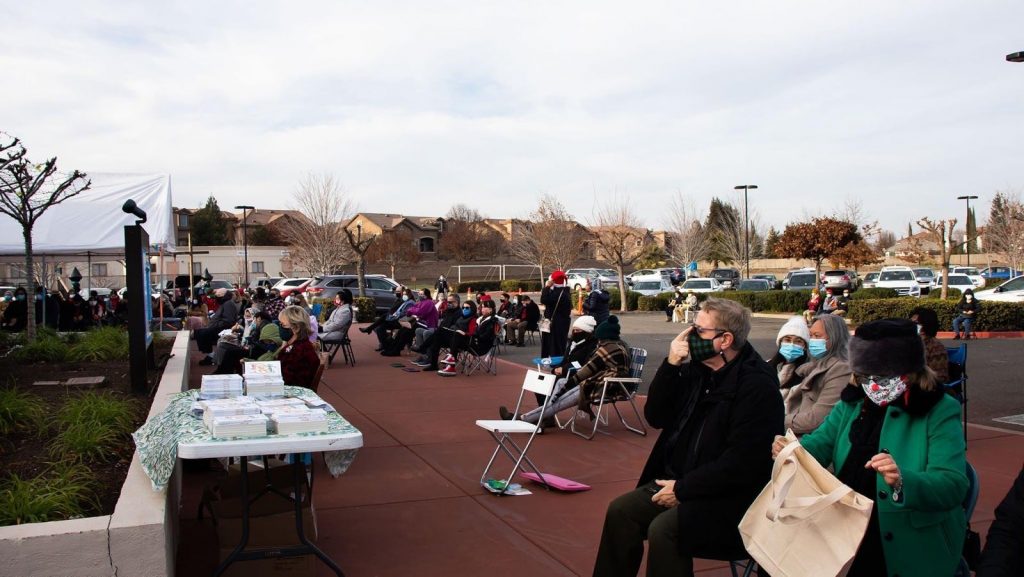


Speak Your Mind
You must be logged in to post a comment.